-
 Bitcoin
Bitcoin $118400
0.47% -
 Ethereum
Ethereum $3836
2.20% -
 XRP
XRP $3.157
2.98% -
 Tether USDt
Tether USDt $0.9999
-0.03% -
 BNB
BNB $801.5
1.31% -
 Solana
Solana $180.9
2.07% -
 USDC
USDC $0.9999
-0.02% -
 Dogecoin
Dogecoin $0.2225
2.50% -
 TRON
TRON $0.3285
-1.02% -
 Cardano
Cardano $0.7789
2.60% -
 Hyperliquid
Hyperliquid $43.60
2.39% -
 Sui
Sui $3.892
4.41% -
 Stellar
Stellar $0.4229
3.34% -
 Chainlink
Chainlink $18.01
3.98% -
 Hedera
Hedera $0.2745
6.77% -
 Bitcoin Cash
Bitcoin Cash $582.3
3.38% -
 Avalanche
Avalanche $23.77
1.04% -
 Ethena USDe
Ethena USDe $1.001
0.01% -
 Toncoin
Toncoin $3.493
3.59% -
 Litecoin
Litecoin $110.0
2.48% -
 UNUS SED LEO
UNUS SED LEO $8.936
-0.37% -
 Shiba Inu
Shiba Inu $0.00001304
2.49% -
 Uniswap
Uniswap $9.999
1.09% -
 Polkadot
Polkadot $3.897
3.26% -
 Monero
Monero $308.6
-0.83% -
 Dai
Dai $0.9999
-0.01% -
 Bitget Token
Bitget Token $4.504
-0.04% -
 Pepe
Pepe $0.00001154
2.95% -
 Cronos
Cronos $0.1471
3.06% -
 Ethena
Ethena $0.6691
19.53%
What are the common mistakes to avoid when using Bollinger Bands?
Bollinger Bands are a dynamic tool that adapts to volatility, but traders often misuse them by acting on band touches alone, ignoring trend context, or failing to confirm signals—leading to false entries.
Jul 31, 2025 at 12:59 am
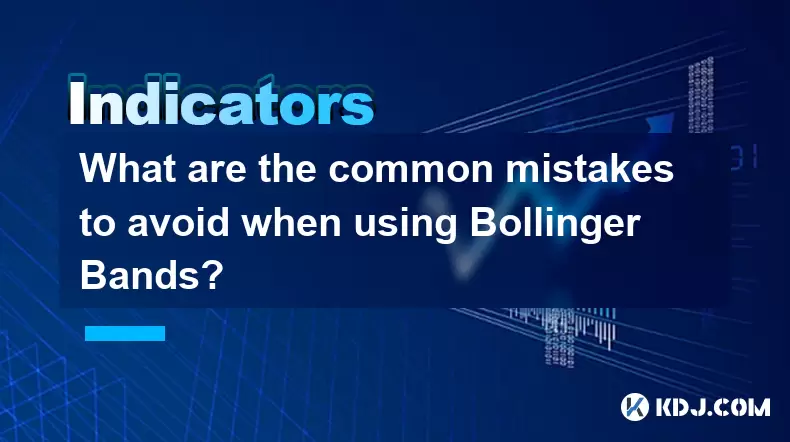
Understanding Bollinger Bands and Their Structure
Bollinger Bands are a widely used technical analysis tool developed by John Bollinger in the 1980s. They consist of three lines: a simple moving average (SMA), typically over 20 periods, and two standard deviation bands plotted above and below the SMA. These bands dynamically expand and contract based on market volatility. When volatility increases, the bands widen; when it decreases, they narrow. This adaptability makes them useful for identifying potential overbought or oversold conditions. However, misunderstanding the components can lead to misinterpretation. For instance, traders may mistakenly assume that touching the upper band always signals a sell, or the lower band a buy. This assumption ignores the context of the prevailing trend and can result in premature entries or exits.
Overreliance on Band Touches as Entry or Exit Signals
One of the most common mistakes is treating price touching the upper or lower band as a definitive signal to trade. While such touches can indicate short-term extremes, they do not guarantee a reversal. In strong trending markets, price can ride along the upper or lower band for extended periods. For example, during a powerful bullish trend, the price may consistently touch or even move outside the upper band without reversing. Acting solely on these touches without confirming signals from other indicators or price action analysis increases the risk of false signals. Traders should instead look for confirmation through candlestick patterns, volume spikes, or divergence on oscillators like the RSI before making trading decisions.
Ignoring the Importance of the Middle Band as Dynamic Support or Resistance
The 20-period SMA at the center of the Bollinger Bands often acts as dynamic support in uptrends and resistance in downtrends. A frequent error is overlooking this function and focusing only on the outer bands. When price pulls back to the middle band in a strong trend and bounces, it can signal continuation rather than reversal. Traders who short simply because price approached the upper band, without acknowledging that the middle band is holding as support, may miss the ongoing momentum. To avoid this, monitor how price interacts with the middle SMA. A clean bounce suggests trend strength, while a break below or above it may indicate weakening momentum or potential reversal, especially when combined with high volume.
Misinterpreting Band Squeezes Without Confirming Breakout Direction
A Bollinger Band squeeze occurs when the bands narrow significantly, indicating low volatility and often preceding a sharp price movement. However, many traders make the mistake of anticipating the direction of the breakout without confirmation. A squeeze does not indicate whether the price will move up or down—it only signals that a move is likely. Entering a trade based solely on the expectation of a breakout in a preferred direction can lead to losses. To use the squeeze effectively:
- Wait for the price to close decisively outside one of the bands.
- Look for increased volume to confirm the breakout.
- Use additional tools such as horizontal support/resistance levels or chart patterns to assess the likelihood of the breakout direction.
- Avoid placing trades before confirmation, even if the squeeze appears prolonged.
Using Default Settings Without Adjusting for Market Conditions
The standard Bollinger Bands configuration uses a 20-period SMA and 2 standard deviations. While this works well in many scenarios, applying it universally across all assets and timeframes is a critical mistake. Cryptocurrencies, for example, exhibit higher volatility than traditional markets. Using default settings on a highly volatile altcoin might generate excessive false signals. To optimize performance:
- Test different period lengths (e.g., 10, 50) based on the asset’s behavior.
- Adjust the standard deviation multiplier (e.g., 1.5 or 2.5) to better fit the asset’s volatility profile.
- Backtest settings on historical data to evaluate their effectiveness.
- Consider using Bollinger Bands in conjunction with Average True Range (ATR) to gauge whether current volatility aligns with the chosen parameters.
Failing to Combine Bollinger Bands with Other Indicators
Relying exclusively on Bollinger Bands increases the probability of misreading market conditions. These bands are best used as part of a broader strategy. For instance, combining them with momentum indicators can filter out weak signals. When price touches the lower band and the Relative Strength Index (RSI) shows oversold conditions with bullish divergence, the case for a long trade strengthens. Conversely, if RSI remains in overbought territory while price touches the upper band, the uptrend may still have room to run. Other complementary tools include:
- MACD for trend confirmation and momentum shifts.
- Volume indicators to validate breakout attempts.
- Fibonacci retracement levels to identify potential reversal zones that align with band touches.
Not Accounting for Market Context and Trend Bias
Trading signals from Bollinger Bands must be interpreted within the broader market context. In a strong bullish trend, buying near the lower band or middle band with confirmation is often more reliable than shorting at the upper band. Similarly, in a downtrend, selling near the upper band or middle band is preferable to buying at the lower band. Ignoring the trend bias leads to counter-trend trades with lower probability of success. To maintain alignment with market structure:
- Use higher timeframe charts to determine the primary trend.
- Apply trendlines or moving averages to identify directional bias.
- Only consider reversal signals at band extremes when there are clear signs of trend exhaustion.
Frequently Asked Questions
Can Bollinger Bands be used effectively on all cryptocurrency timeframes?
Yes, Bollinger Bands can be applied to any timeframe, but their effectiveness varies. On lower timeframes like 5-minute charts, they may generate frequent false signals due to noise. On higher timeframes such as daily or weekly, they tend to provide more reliable indications of volatility and potential reversals. Adjusting the period and standard deviation settings based on the timeframe improves accuracy.
What should I do if price moves outside the Bollinger Bands?
Price moving outside the bands is not inherently a reversal signal. In trending markets, this can indicate strength. Wait for confirmation—such as a reversal candlestick pattern, a return within the bands, or divergence on an oscillator—before acting. Sudden moves outside the bands on high volume may signal the start of a new trend rather than an overextended one.
Is it safe to use Bollinger Bands for automated trading strategies?
They can be integrated into automated systems, but only with additional filters. Using Bollinger Bands alone in algorithmic trading often results in poor performance due to false breakouts and whipsaws. Combine them with volume thresholds, trend filters, and confirmation indicators to improve reliability in automated setups.
How do I know if a Bollinger Band squeeze is about to lead to a big move?
There is no guaranteed way to predict the exact timing or direction of a post-squeeze move. However, a prolonged squeeze, especially after a period of consolidation near key support or resistance, increases the likelihood of a strong breakout. Monitor volume and price action closely—breakouts accompanied by surging volume are more likely to sustain.
Disclaimer:info@kdj.com
The information provided is not trading advice. kdj.com does not assume any responsibility for any investments made based on the information provided in this article. Cryptocurrencies are highly volatile and it is highly recommended that you invest with caution after thorough research!
If you believe that the content used on this website infringes your copyright, please contact us immediately (info@kdj.com) and we will delete it promptly.
- Pudgy Penguins Price Prediction: Buying Opportunity or Insider Dump?
- 2025-07-31 18:50:35
- Penny Coin Power: Unearthing 20x Potential in Undervalued Crypto
- 2025-07-31 20:10:14
- Shrapnel, GalaChain, and China Gaming: A New Frontier
- 2025-07-31 19:10:35
- Mutuum Finance, Bitcoin, and Market Analysis: Decoding the Latest Trends
- 2025-07-31 19:30:13
- Dogecoin Howl: Bullish Signals and Analyst Bites – Is the Meme Coin Ready to Pounce?
- 2025-07-31 18:30:16
- Decoding Crypto Presales, Ethereum's Role, and Navigating a Tricky Altcoin Season
- 2025-07-31 18:30:16
Related knowledge
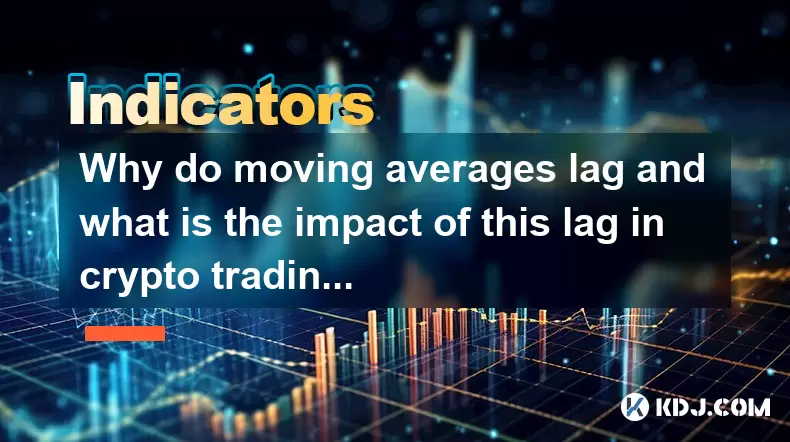
Why do moving averages lag and what is the impact of this lag in crypto trading?
Jul 31,2025 at 08:07pm
Understanding the Concept of Moving Averages in Crypto TradingMoving averages are among the most widely used technical indicators in cryptocurrency tr...
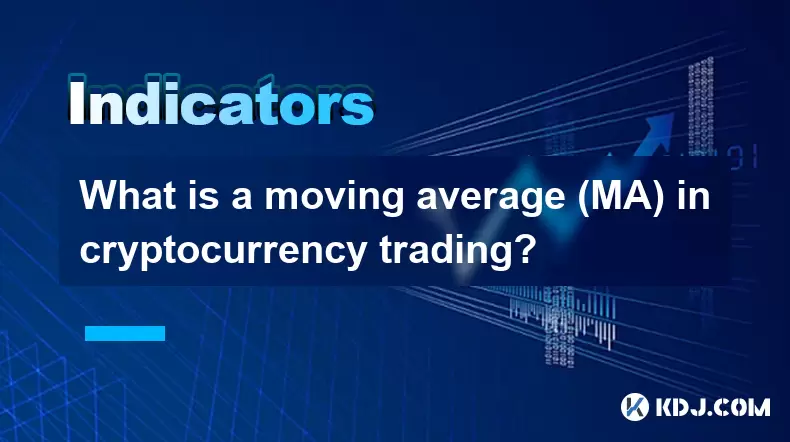
What is a moving average (MA) in cryptocurrency trading?
Jul 31,2025 at 06:30pm
Understanding the Concept of Moving Average (MA)A moving average (MA) is a widely used technical analysis tool in cryptocurrency trading that helps sm...
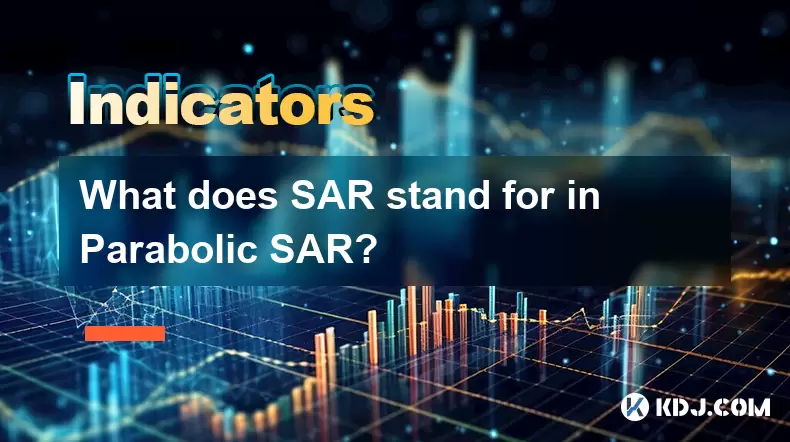
What does SAR stand for in Parabolic SAR?
Jul 31,2025 at 06:49pm
Understanding the Meaning of SAR in Parabolic SARIn the context of technical analysis in the cryptocurrency market, SAR stands for 'Stop and Reverse' ...
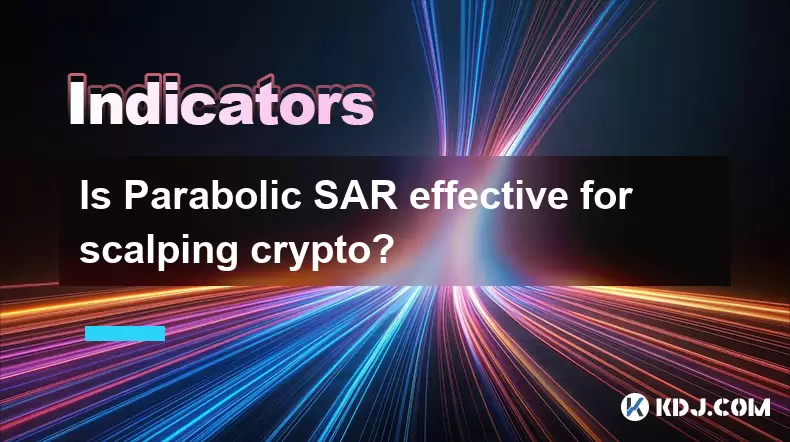
Is Parabolic SAR effective for scalping crypto?
Jul 31,2025 at 08:29pm
Understanding Parabolic SAR in Cryptocurrency TradingThe Parabolic SAR (Stop and Reverse) is a technical indicator developed by J. Welles Wilder, prim...
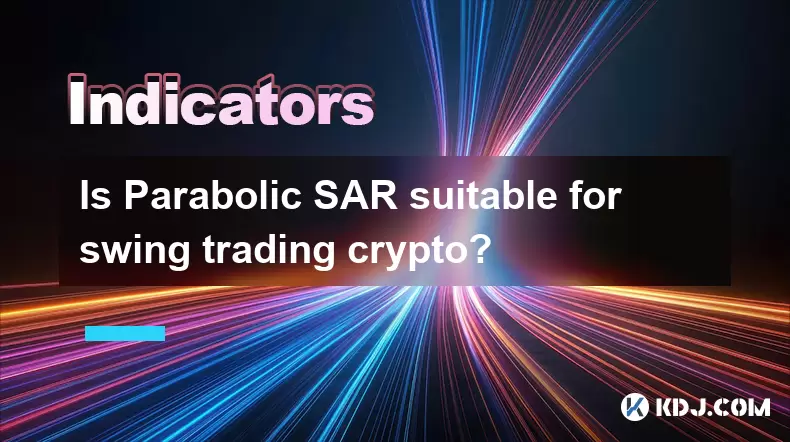
Is Parabolic SAR suitable for swing trading crypto?
Jul 31,2025 at 05:29pm
Understanding Parabolic SAR in Cryptocurrency TradingThe Parabolic SAR (Stop and Reverse) is a technical indicator developed by J. Welles Wilder that ...
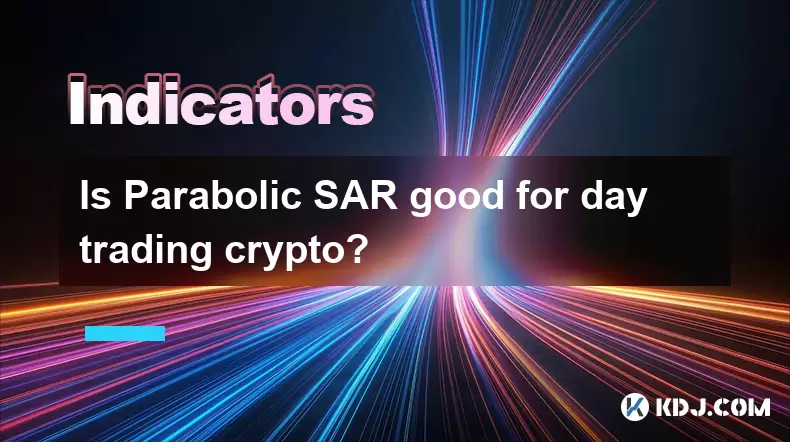
Is Parabolic SAR good for day trading crypto?
Jul 31,2025 at 08:01pm
Understanding Parabolic SAR in Crypto MarketsThe Parabolic SAR (Stop and Reverse) is a technical indicator developed by J. Welles Wilder to identify p...

Why do moving averages lag and what is the impact of this lag in crypto trading?
Jul 31,2025 at 08:07pm
Understanding the Concept of Moving Averages in Crypto TradingMoving averages are among the most widely used technical indicators in cryptocurrency tr...

What is a moving average (MA) in cryptocurrency trading?
Jul 31,2025 at 06:30pm
Understanding the Concept of Moving Average (MA)A moving average (MA) is a widely used technical analysis tool in cryptocurrency trading that helps sm...

What does SAR stand for in Parabolic SAR?
Jul 31,2025 at 06:49pm
Understanding the Meaning of SAR in Parabolic SARIn the context of technical analysis in the cryptocurrency market, SAR stands for 'Stop and Reverse' ...

Is Parabolic SAR effective for scalping crypto?
Jul 31,2025 at 08:29pm
Understanding Parabolic SAR in Cryptocurrency TradingThe Parabolic SAR (Stop and Reverse) is a technical indicator developed by J. Welles Wilder, prim...

Is Parabolic SAR suitable for swing trading crypto?
Jul 31,2025 at 05:29pm
Understanding Parabolic SAR in Cryptocurrency TradingThe Parabolic SAR (Stop and Reverse) is a technical indicator developed by J. Welles Wilder that ...

Is Parabolic SAR good for day trading crypto?
Jul 31,2025 at 08:01pm
Understanding Parabolic SAR in Crypto MarketsThe Parabolic SAR (Stop and Reverse) is a technical indicator developed by J. Welles Wilder to identify p...
See all articles

























































































